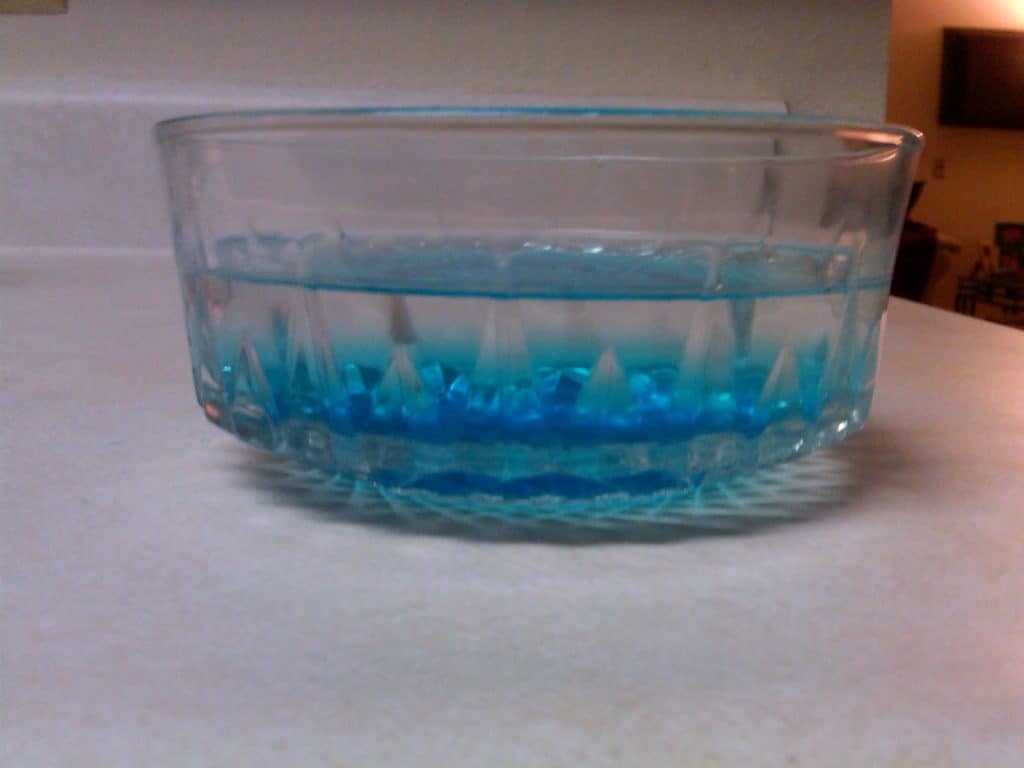You can use various commercial products to eliminate most ant species, including the most dangerous of them all – the red fire ant.
Dawn dish soap is one product you can try that is readily available in the typical American household. Many believe it’s a myth that something simple as dish soap can kill a tribe of vicious fire ants, but it’s true.
Our guide will show you a simple homemade solution using soap detergent to help you quickly eliminate fire ants.
Another method we will teach if you don’t like our homemade fire ant killer recipe is using ant traps with Dawn dish soap that you can plant in areas outside of your home that ants crawl through the most to block them from entering.

How Is Killing Fire Ants With Dawn Dish Soap Possible?
Before preparing everything, you need to make the homemade fire ant killer recipe. Understanding how Dawn dishwashing soap can kill a fire ant colony is essential.
For nearly two centuries, humankind has used soap as one of the main ingredients for getting rid of bugs in their home.
Soaps’ popularity stems from the fact that it’s safe to touch and smell for humans and their pets. As a result, you won’t face the same health risks you do when using insecticide sprays and pesticides that destroy a fire ant infestation but cause cancer.
Potassium is an active ingredient in dishwashing liquid that is hazardous to ants. It is also lethal to mites, mealybugs, and aphids, but it won’t harm humans.
This mineral in most dishwashing soaps kills ants by piercing their skin and tearing the cells inside their shell apart.
Once the cells are destroyed, potassium absorbs the fat and the wetness of the ant’s body. The result is skin so dry that it causes the exoskeleton to split, which is the finishing blow before it leaves many dead fire ants behind.
There are two facts you should note before getting started:
#1 Dishwashing Detergent Doesn’t Have Residual Toxicity To Kill Fire Ants
To achieve your goal, ensure you get the DIY spray mixture directly on the fire ant colonies to kill them. Any moisture that stays on the surface will lose its potency, and ants that walk over it will survive to torment you another day.
This is why many people prefer insecticide spray despite being so toxic for us to inhale because it has residual toxicity. With residual toxicity, the chemical in the insecticide can still kill most insects for at least 4 to 5 hours.
If you decide to go with Dawn Dishwashing soap, it will take you a minimum of 7 days of spraying to successfully eliminate the entire ant colony, including any fire ant queens inside.
#2 Using Dishwashing Detergent Can Kill Plants
When soaps are applied to plants to kill insects, phytotoxicity occurs. Phytotoxicity is a term in the gardening community used to describe the harm a product has on the growth of plants.
The ingredients in dish soap are harmful to plants by slowing down their growth, leaving leaves dehydrated, and making plants incapable of providing you with fruits or flowers.
Plants that experience the most severe harm when exposed to dish soaps are sweet peas, peaches, white roses, daisies, broccoli, and others from the vegetable family.
But we do offer you a solution that helps you minimize damages while accomplishing your goal of dealing with your ant problem.
It’s possible to lessen the phototoxicity from your DIY homemade killer ant spray by diluting the solution with more water.
Since you now understand the advantages and disadvantages of using Dawn dish soap to kill fire ants, we can get into making the mixture below.
How To Make DIY Fire Ant Spray Using Dawn Dish Soap
The process is simple as long as you follow the recipe without adding more or less than we tell you of each ingredient. However, if you try to modify it and make the spray your way, it may not kill the fire ants as intended.
What You Will Need For Fire Ant Hills:
- Dawn Dish Soap
- Water
- Spray bottle
- Large Bowl (To mix the solution)
Instructions
- Mix 8 tablespoons of Dawn dish soap with 19 cups of water.
- Mix with a spoon for 1 minute or until it looks foamy.
- Pour the mixture from the bowl into a spray bottle until it’s filled to the top.
- Spray directly on ants or on any mounds you see around your property.
- Repeat all four steps daily or until the ants are all dead.
Note: If you use less than 1 gallon of water, mix two tablespoons of Dawn Soap detergent with only a quarter of water. With one tablespoon, stick with only a pint of water.
We tested the mixture options above to ensure you have enough potassium in the bottle to destroy all fire ants, but you must spray directly, or it won’t work.
This method is most effective if you can locate their lair, an ant hill they build near your home. Then, to ensure the ants are dead and don’t return, pour boiling water over the hill once you spray, and there is no chance they can survive or escape.
Lastly, if you are dealing with other bugs like aphids, whiteflies, spider mites, and ladybugs, you can use a milder version of this homemade mixture. Add 20% extra water to your solution, and you can still kill them while decreasing phytotoxicity.
How To Make DIY Ant Traps Using Dawn Dish Soap
Using Dawn Dish soap to create ant traps is an inexpensive way of ensnaring ants that make it into different rooms in your home.
These traps won’t kill all the ants inside your living space, but the traps will decrease the infestation by 25 to 50 percent. To completely decimate the population, you must use a combination of spray and ant traps to get the job done.
What You Will Need
- Water
- Sugar
- Plastic foil
- Dawn Dish soap
- Coffee cup or a large bowl
Instructions
- Grab a coffee cup or a mixing bowl. Fill either one with water until it’s full while mixing in a tablespoon of sugar.
- Combine the sugar with the water until the liquid solution turns white, and then add a tablespoon of dishwashing soap.
- Wrap the cup with aluminum foil until the top is covered.
- Use a toothpick to poke 10 to 15 holes in the foil at the top.
- Leave the cup in an area with the most ants walking around it.
Summing It Up
Now you know that using Dawn Dish soap to kill ants is not a myth because we have tested the method successfully. The steps in this guide to make your own homemade solution are easy to follow, and after a week, you will no longer have an ant infestation in your home.
But remember that using this solution comes with risks that could kill your plants if you don’t take the necessary precautions. As long as you dilute the mixture when necessary, you should not have any issues with this safe, family-friendly method.
Recommended Reading:
